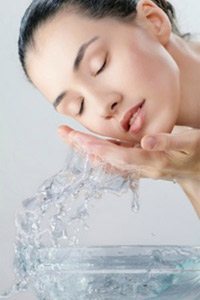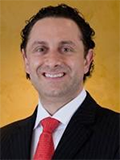
In some cases, a relatively common skin condition, such as rosacea, can lead to a relatively uncommon condition called rhinophyma. About 16 million people in the U.S. have rosacea, according to the National Rosacea Society.
The condition affects much more than the skin. It can also have a negative impact on your self-esteem and confidence. While there is no cure for rosacea, a number of treatments can help you control it or minimize its symptoms.
What Is Rosacea?
As the name suggests, rosacea causes the skin to turn red, particularly the skin on the face. Small blood vessels beneath the surface of the skin can be visible and look swollen. Some people also develop small bumps over their face, which look like pimples or acne. Other symptoms of the condition include dry, red eyes and a thickening of the skin.
Although anybody can develop the condition, it most commonly occurs in middle-aged women who have light colored skin. The condition tends to run in families.
What Is Rhinophyma?
While rosacea is relatively common and mostly affects women, a complication of the condition, rhinophyma, is relatively rare and most commonly affects men. When a person has rhinophyma, the skin on the nose becomes thicker, thanks to an overgrowth of the sebaceous glands on the nose.
The nose becomes more bulbous in shape and enlarged in size. The skin on the nose might be red in color or look yellow and waxy. Usually, the glands become more prominent and the skin looks oilier.
At one point in time, there were a number of misconceptions about rhinophyma. One common myth stated that the condition was caused by drinking an excess amount of alcohol. While drinking alcohol can trigger rosacea and often causes flushing of the face and nose, the exact cause of rhinophyma remains unknown. Anyone can develop rhinophyma, regardless of how much or how little they drink.
Preventing Flare-Ups
Preventing rosacea flare-ups is often a two-step process. You can make changes to your habits and lifestyle to help reduce the chance of flare-ups. Your surgeon may also recommend medication or treatment to help clear up existing signs of rosacea. The condition might not be curable, but many patients who have it are able to get it under control.
Lifestyle changes that can reduce your risk for symptoms of rosacea include learning to avoid factors that can trigger it. For many patients, sun exposure is a trigger, so it’s a good idea to start using a sunscreen daily. Extreme weather, including hot and cold, can also be a trigger. In the colder months of the year, wear a scarf or otherwise cover up your face when going outdoors. In the summer, try to stick to areas that are air conditioned. If you are outside in the heat, stay in the shade.
In some cases, the skincare products you use can lead to a flare-up. Look for products designed for sensitive skin or talk to your surgeon about which products are ideal to use. While harsh skincare products can trigger a flare-up, other products can help you get the condition under control. Products designed to fight acne, such as topical creams or lotions with retinoids, also often help patients with rosacea. Antibacterial products can also prove beneficial.
In-office skincare treatments, such as dermabrasion or laser skin resurfacing might be too harsh for people with rosacea. But, non-ablative treatments, such as intense pulsed light (IPL) therapy can be help. During an IPL treatment, the top layer of skin is left intact and untouched. The laser light penetrates to the dermis, helping correct the blood vessels.
Treating Rhinophyma
Treating rhinophyma is a bit different than treating rosacea. Usually, more invasive treatments are needed to actually remove the thickened skin from the nose and to restore its original shape and size. One treatment option is dermabrasion, a surgical procedure that usually involves heavy sedation or general anesthesia. During the procedure, the surgeon usually removes the entire top layer of the skin. It might look as though a piece of sandpaper has been run over the nose, smoothing away the rough, thick skin.
A second treatment option is laser skin resurfacing. Laser treatments are more in-depth than IPL, as they typically involve damaging the top layer of skin, so that new cells can grow and replace the bumpy, thickened nasal skin.
Whether you are dealing with a case of mild rosacea and want help figuring out how to manage it, or are dealing with a case of rhinophyma, Dr. George Bitar of the Bitar Cosmetic Surgery Institute near Washington, DC, can help. To learn more about your treatment options, call 703-206-0506 to schedule a consultation today.

George Bitar, MD, FACS is an award-winning, board-certified cosmetic and reconstructive plastic surgeon, the Founder and Medical Director of Bitar Cosmetic Surgery Institute in Virginia. He specializes in the latest surgical and minimally invasive techniques to scar management and reduction. Dr. Bitar is involved in groundbreaking research and education in plastic surgery and has authored numerous articles, abstracts, and chapters.





